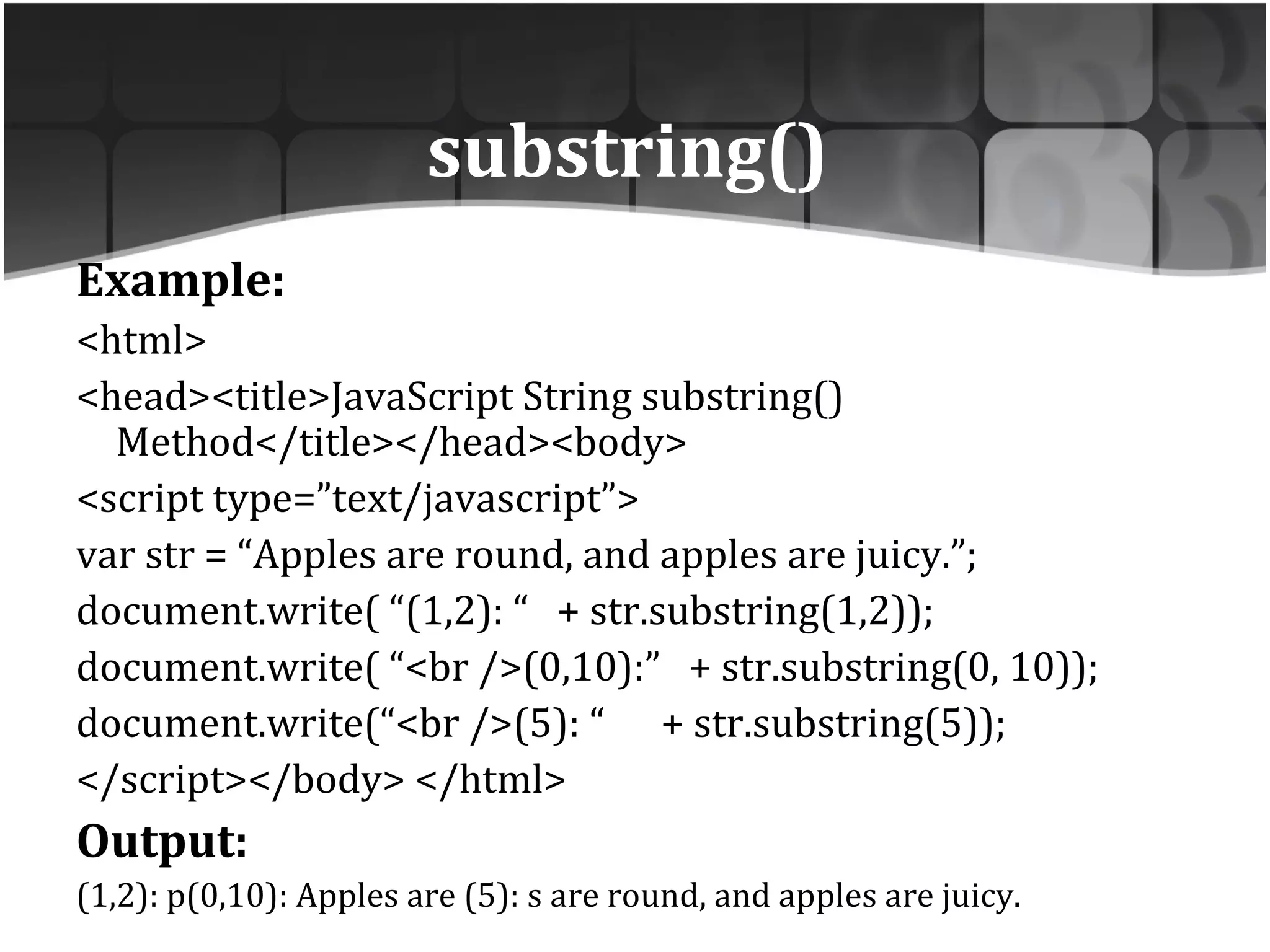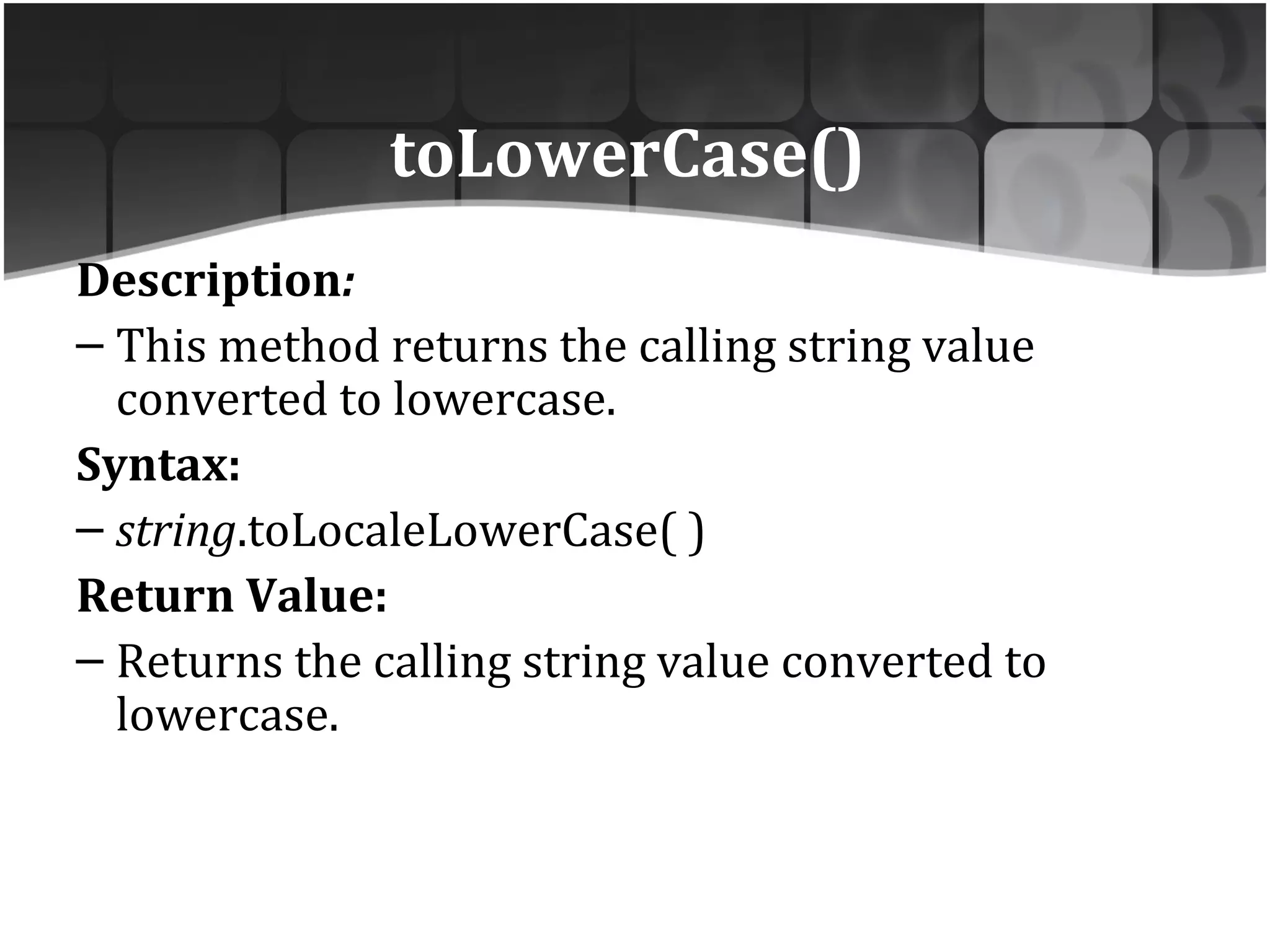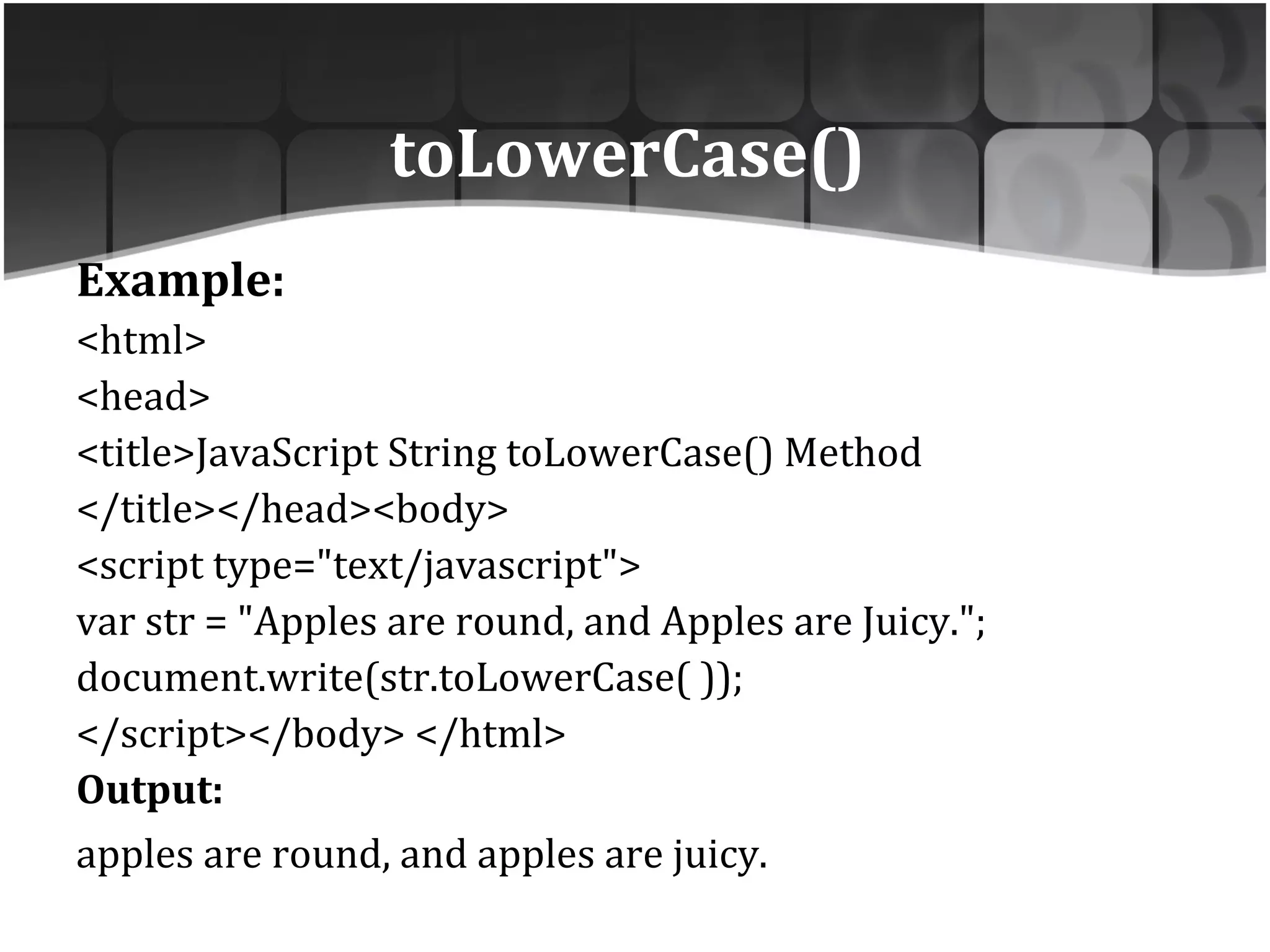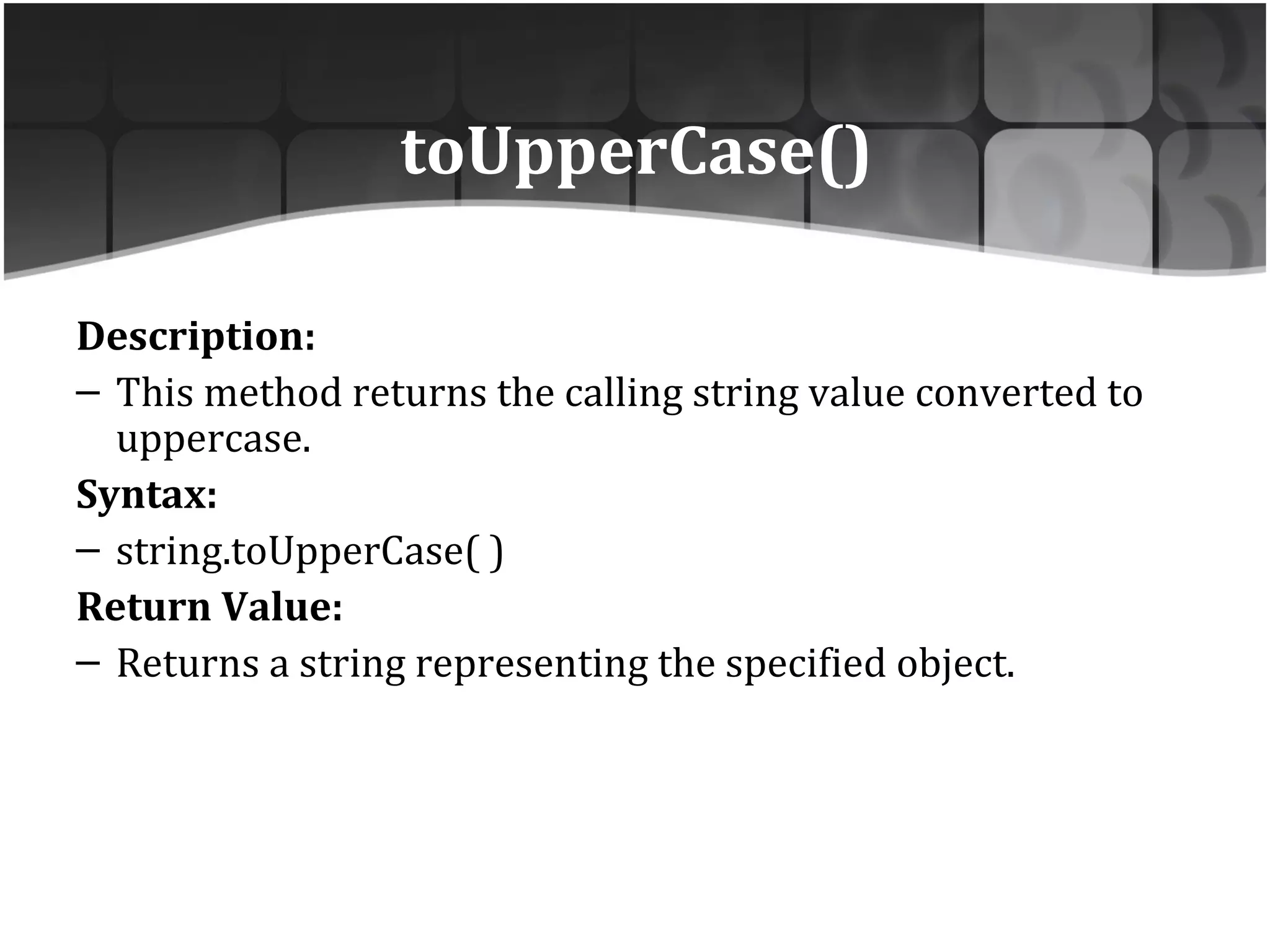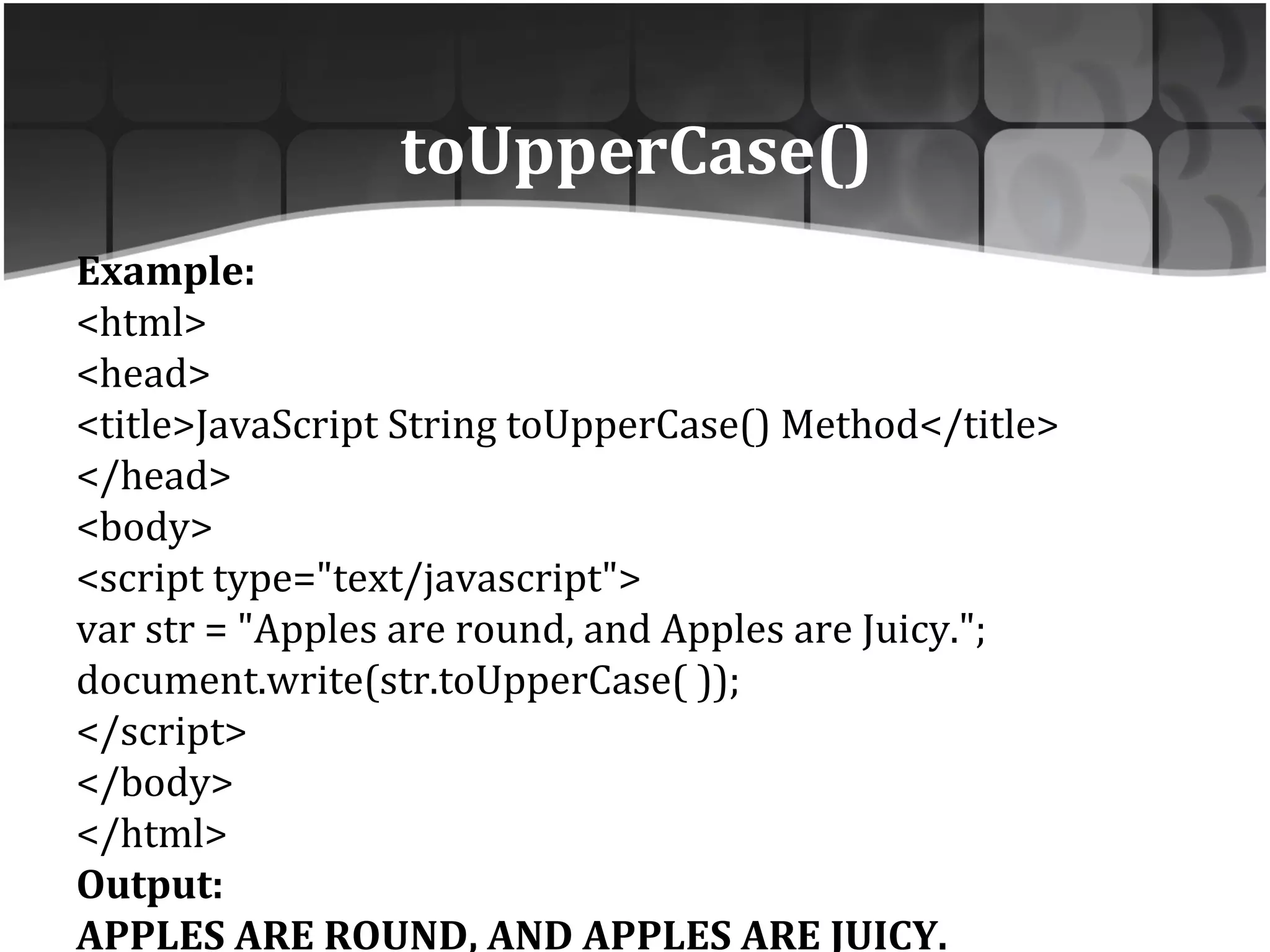The document provides an overview of JavaScript string functions, detailing methods such as charAt, concat, indexOf, lastIndexOf, replace, search, substr, substring, toLowerCase, and toUpperCase. Each method is accompanied by a description, syntax, parameters, and example usage with HTML script outputs. This serves as a comprehensive guide for understanding how to manipulate strings in JavaScript.

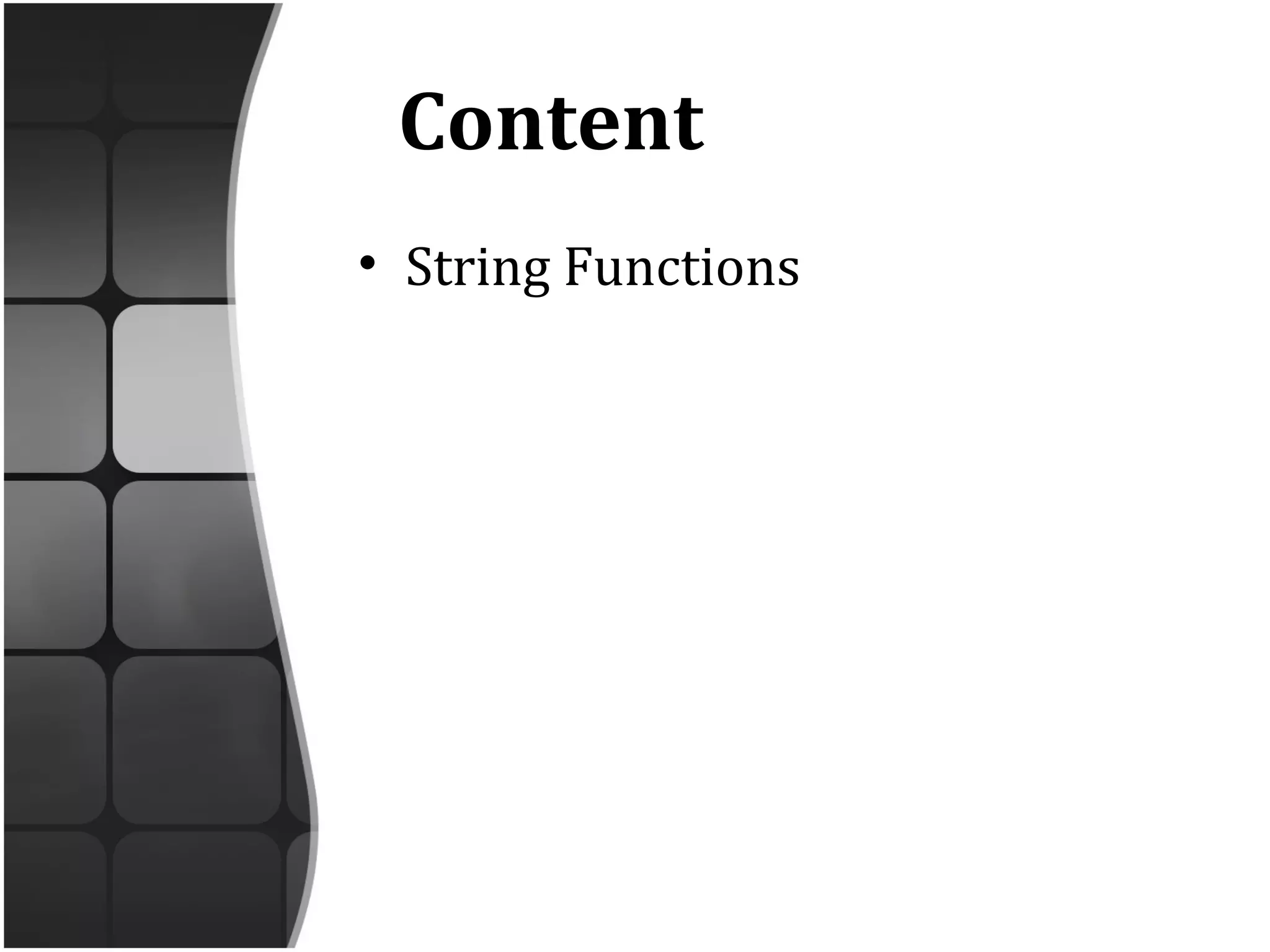
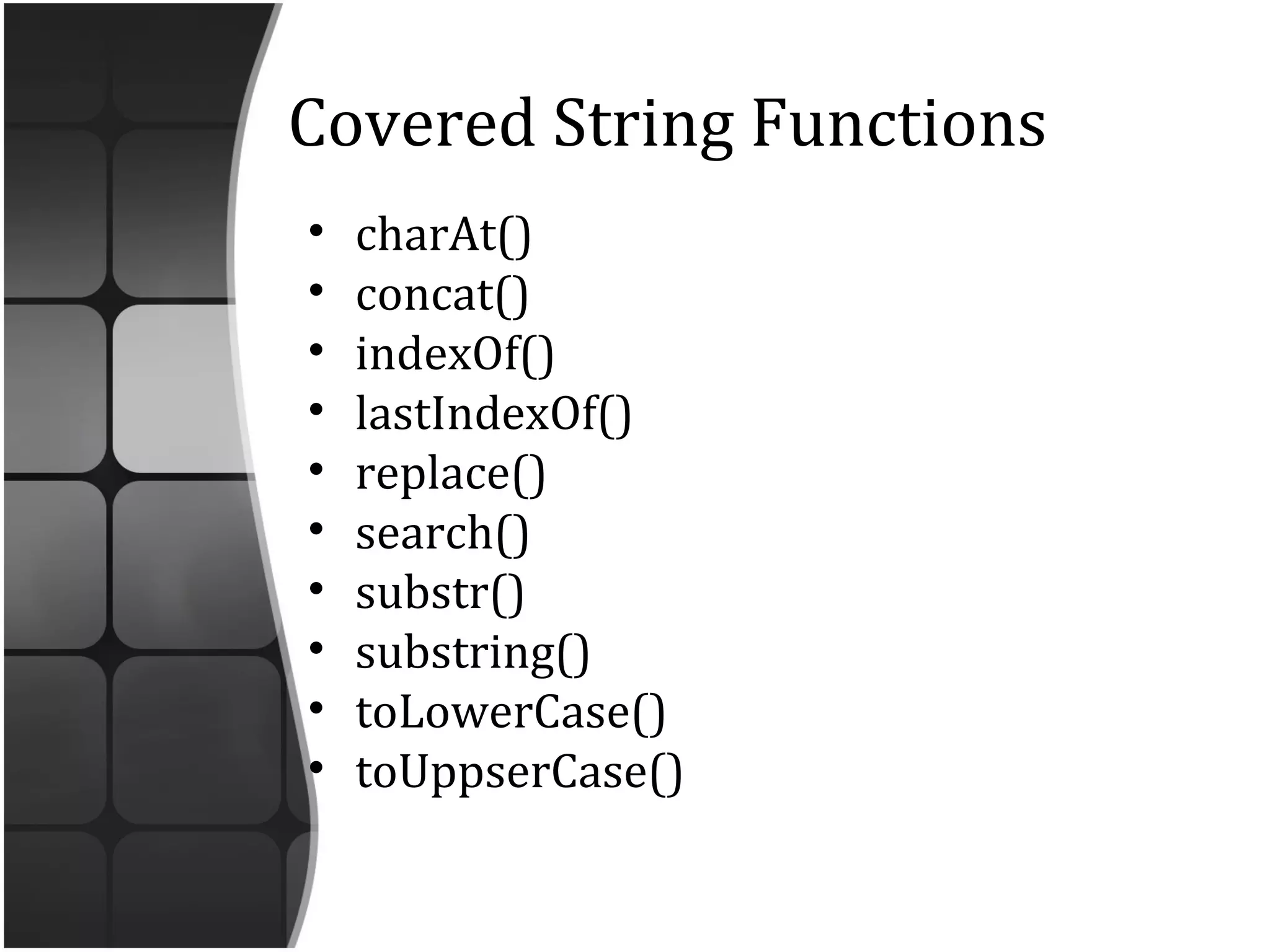
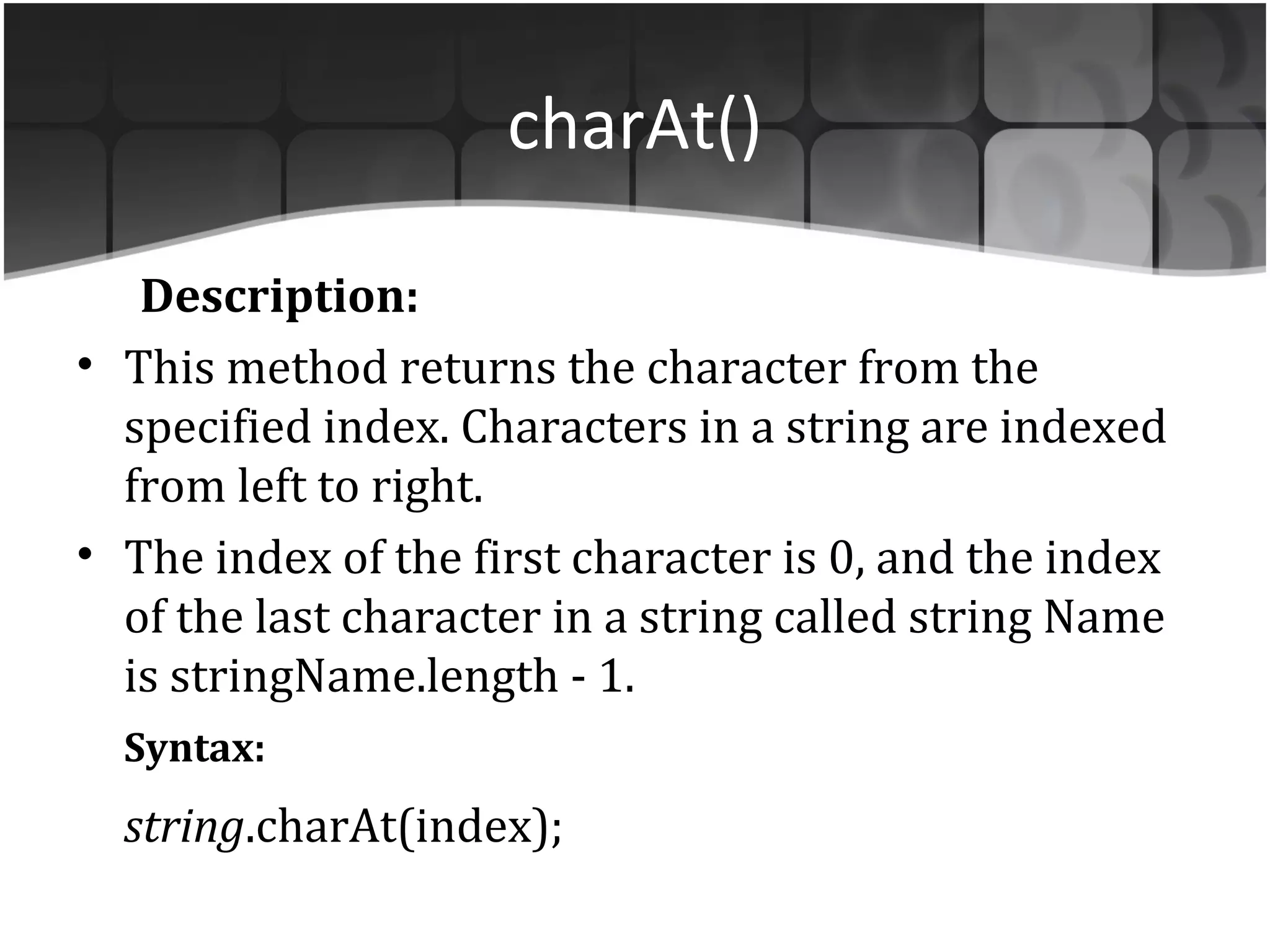
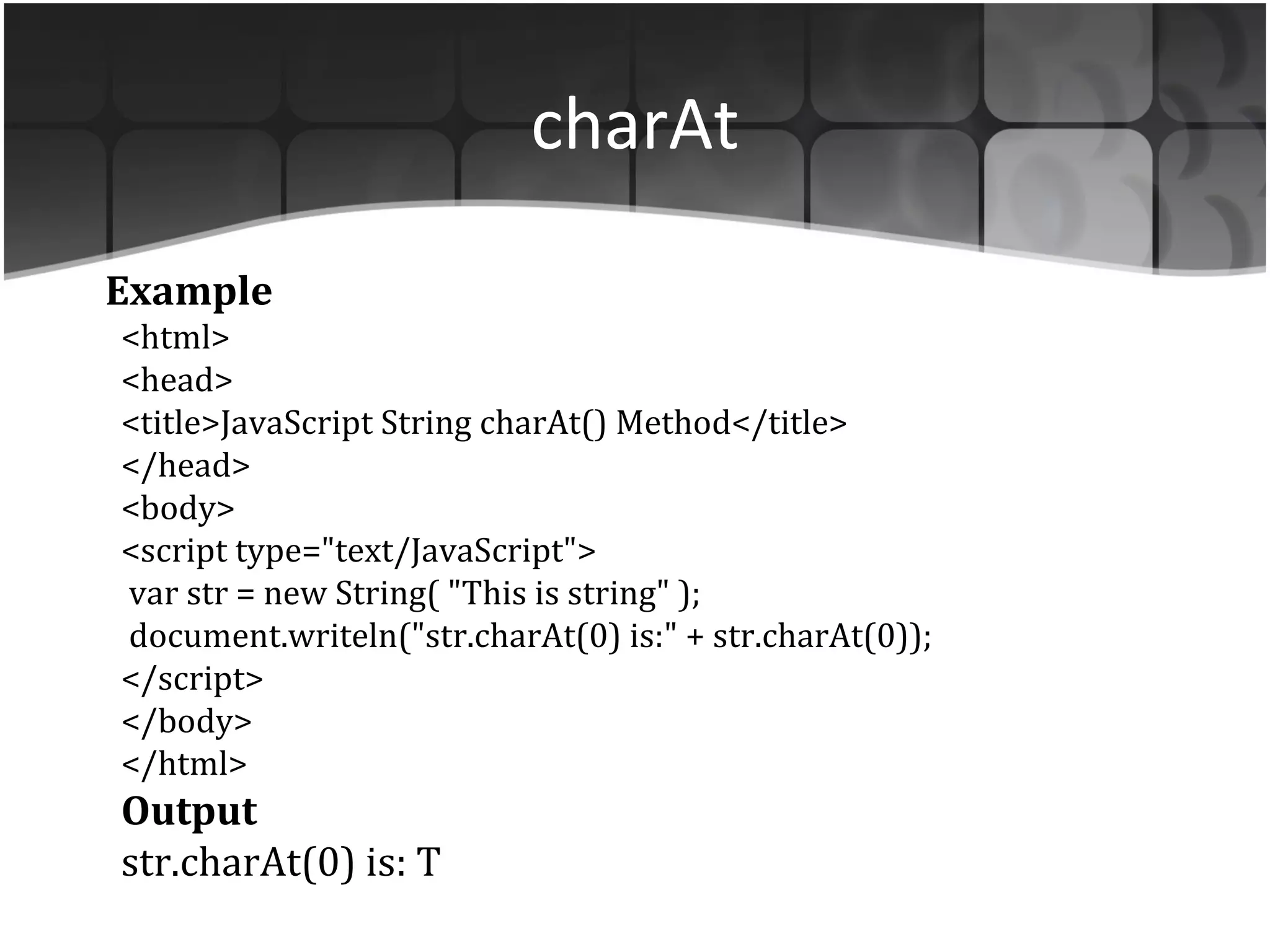
![concat()
Description:
• This method adds two or more strings and returns a new
single string.
Syntax:
string.concat(string2, string3[, ..., stringN]);
parameters:
string2...stringN : These are the strings to be concatenated.](https://image.slidesharecdn.com/javascriptfunctions-140625102156-phpapp02/75/Javascript-built-in-String-Functions-6-2048.jpg)
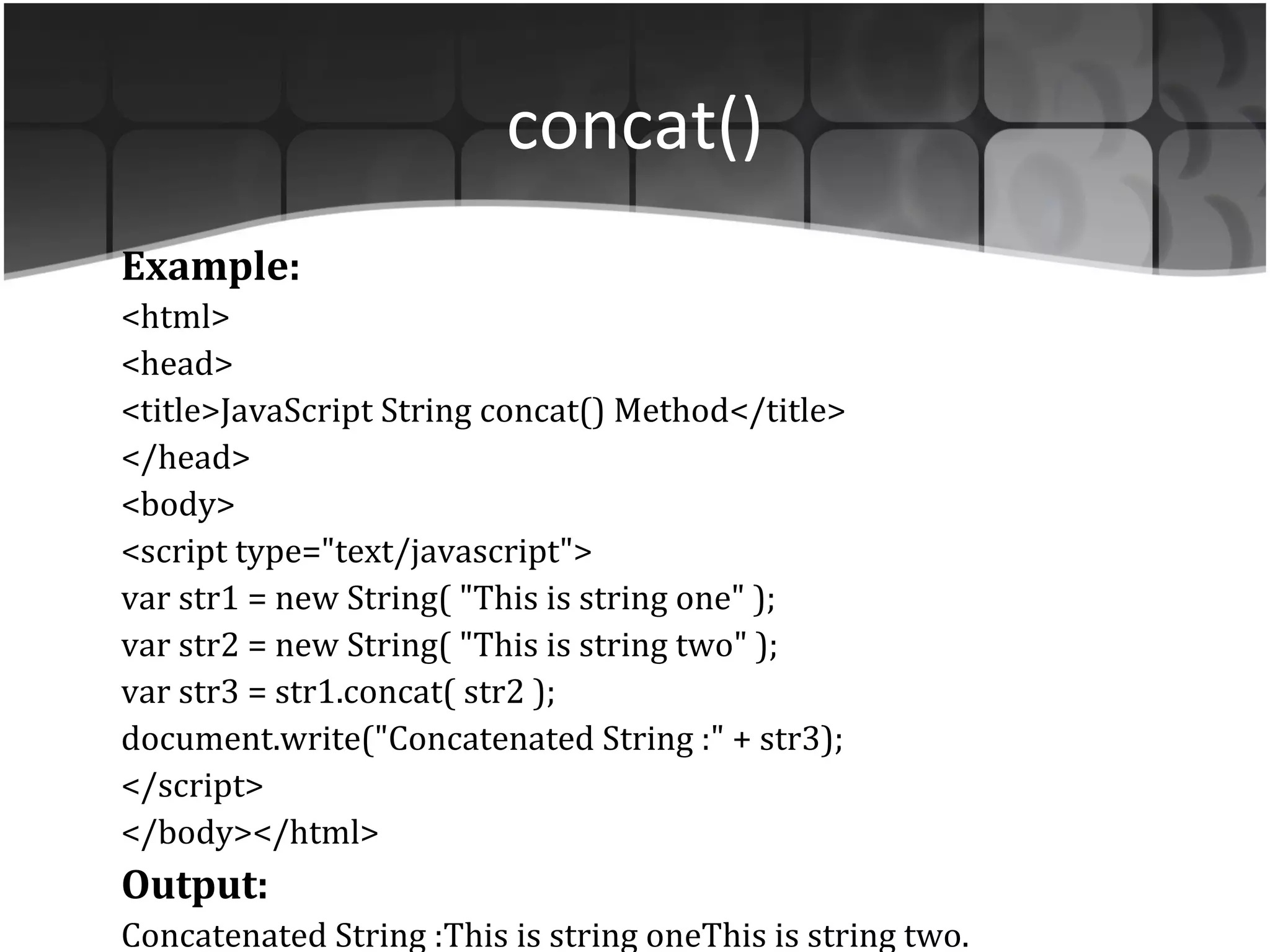
![indexOf
Description:
• the first occurrence of the specified value, starting the
search at This method returns the index within the calling
String object of fromIndex or -1 if the value is not found.
Syntax:
string.indexOf(searchValue[, fromIndex])
Parameters:
searchValue : A string representing the value to search for.
fromIndex : The location within the calling string to start the
search from. It can be any integer between 0 and the length
of the string. The default value is 0.](https://image.slidesharecdn.com/javascriptfunctions-140625102156-phpapp02/75/Javascript-built-in-String-Functions-8-2048.jpg)
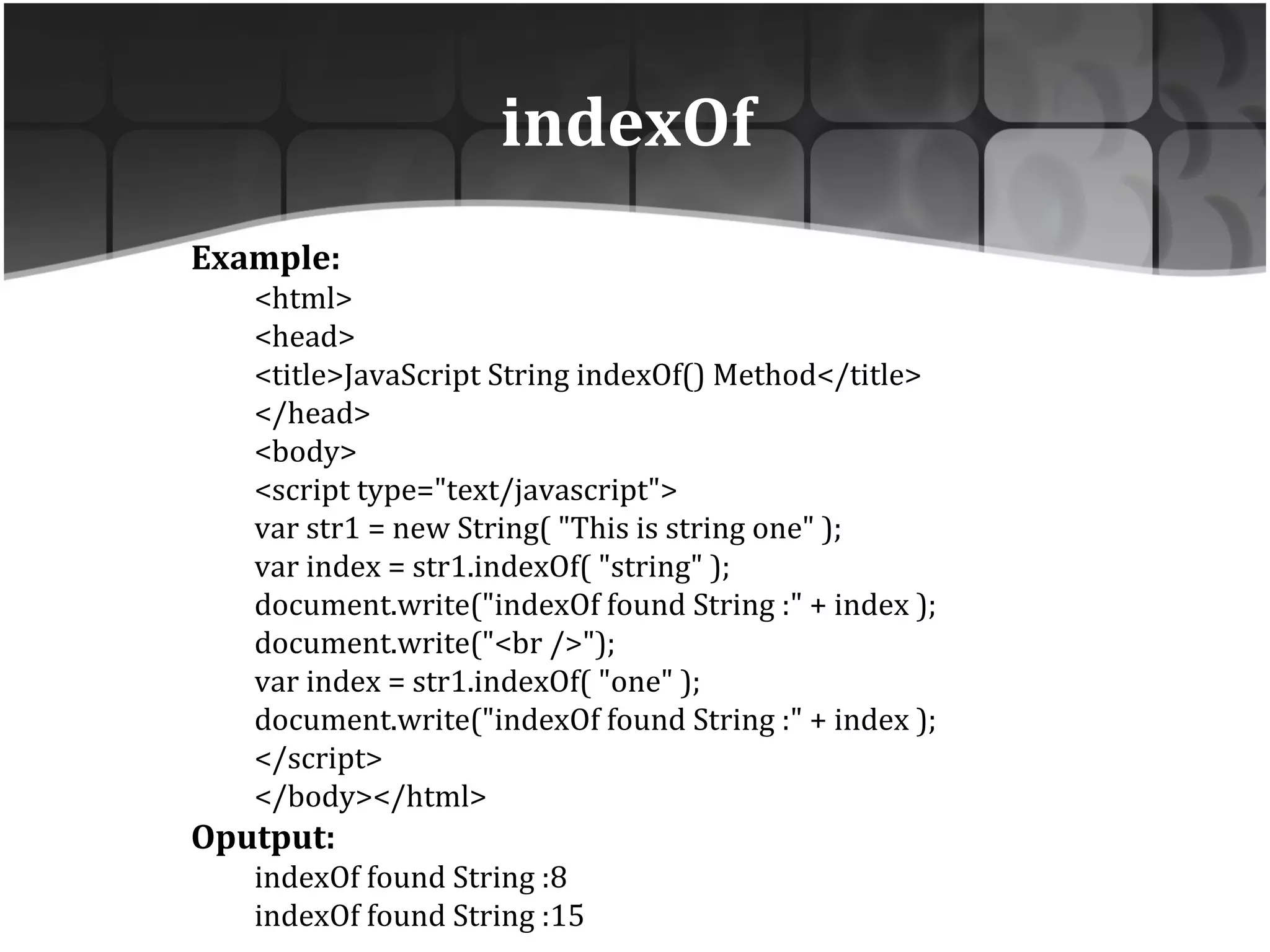
![lastIndexOf()
Description:
– This method returns the index within the calling String
object of the last occurrence of the specified value, starting
the search at fromIndex or -1 if the value is not found.
Syntax:
– string.lastIndexOf(searchValue[, fromIndex])
Parameters:
– searchValue : A string representing the value to search for.
– fromIndex : The location within the calling string to start the
search from. It can be any integer between 0 and the length
of the string. The default value is 0.
Return Value:
– . Returns the index of the last found occurrence otherwise -1
if not found](https://image.slidesharecdn.com/javascriptfunctions-140625102156-phpapp02/75/Javascript-built-in-String-Functions-10-2048.jpg)
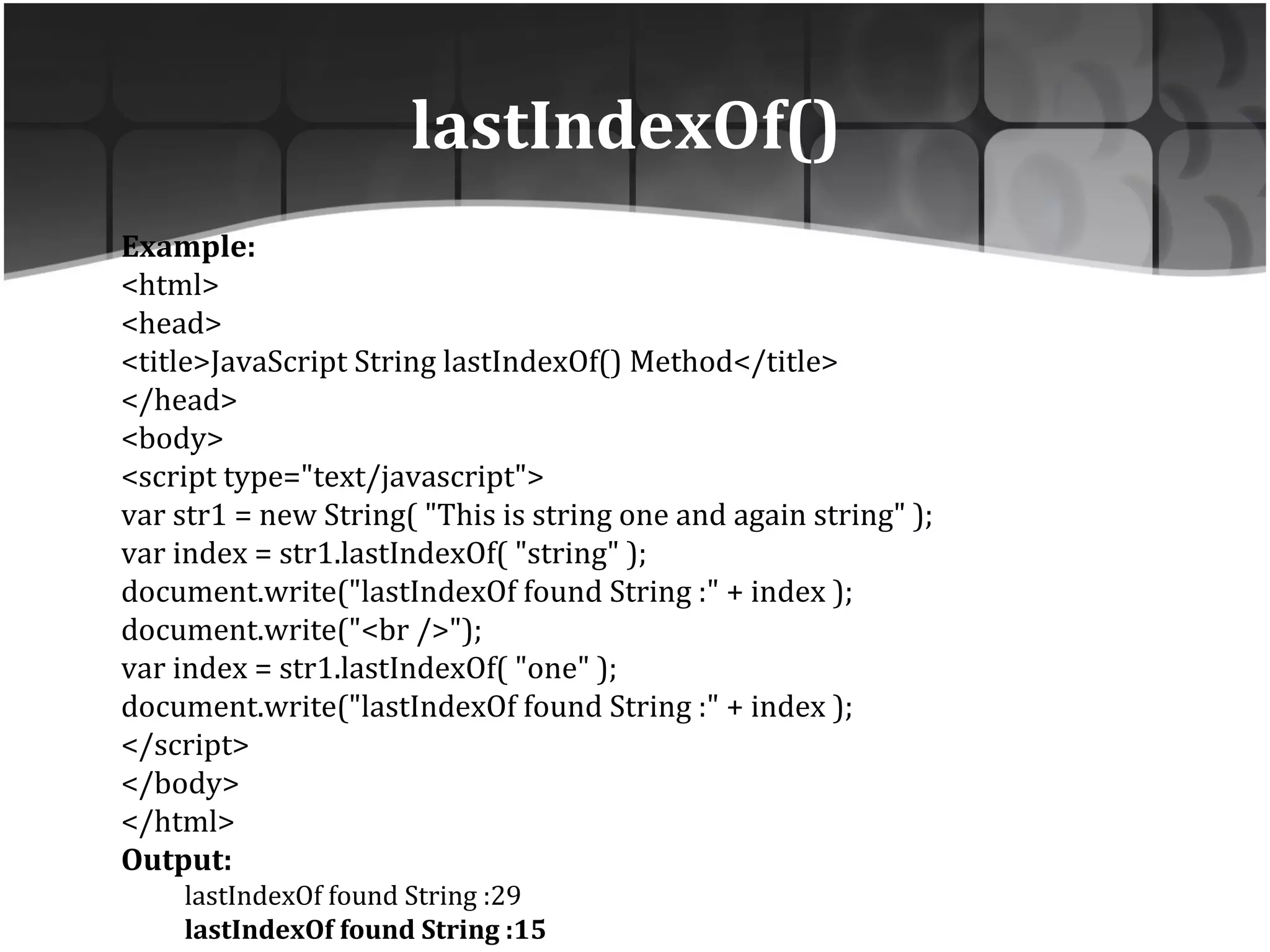
![replace()
Description:
This method finds a match between a regular expression
and a string, and replaces the matched substring with a new
substring.
The replacement string can include the following special
replacement patterns:
Syntax:
string.replace(regexp/substr, newSubStr/function[, flags]);](https://image.slidesharecdn.com/javascriptfunctions-140625102156-phpapp02/75/Javascript-built-in-String-Functions-12-2048.jpg)
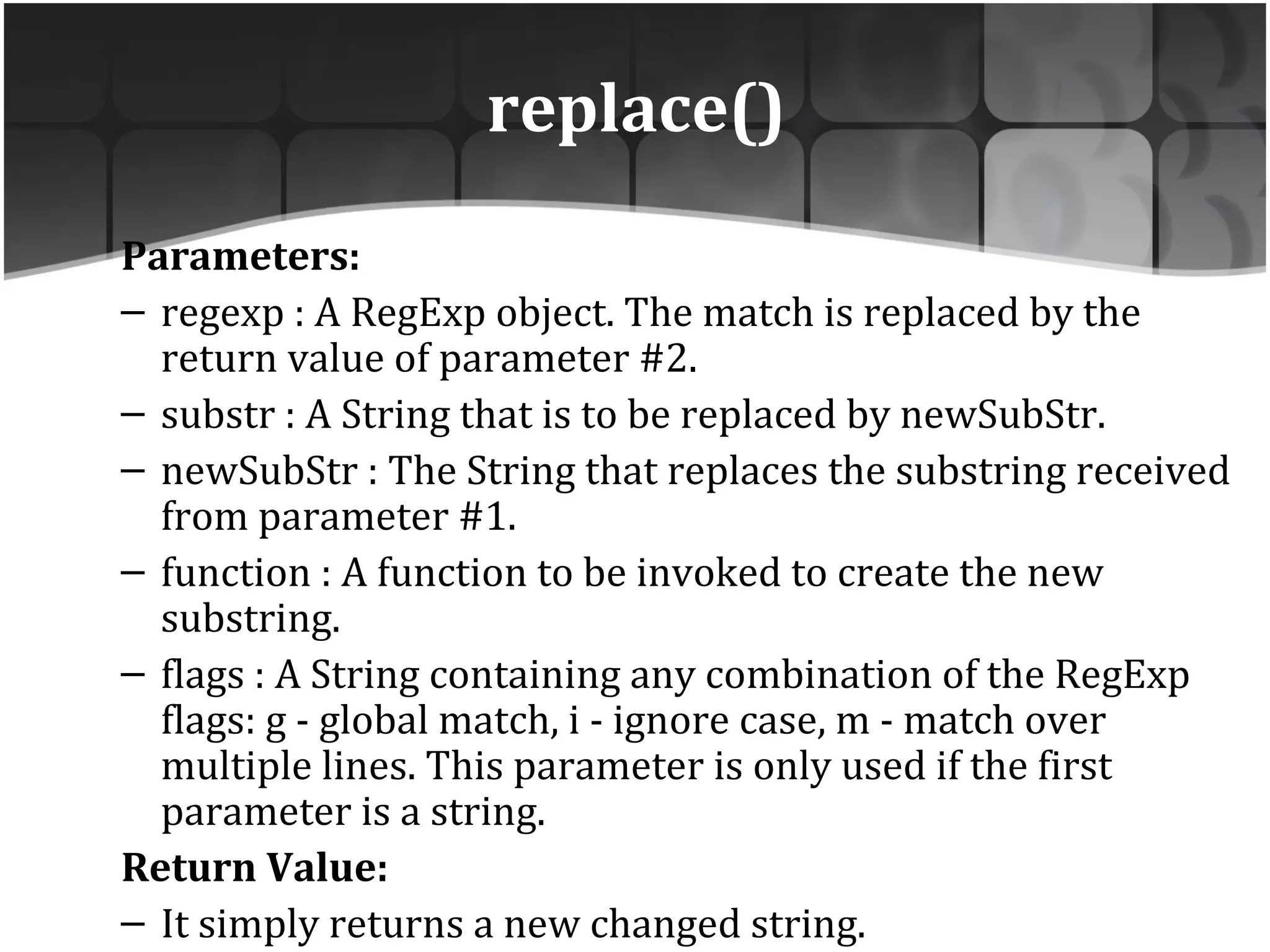
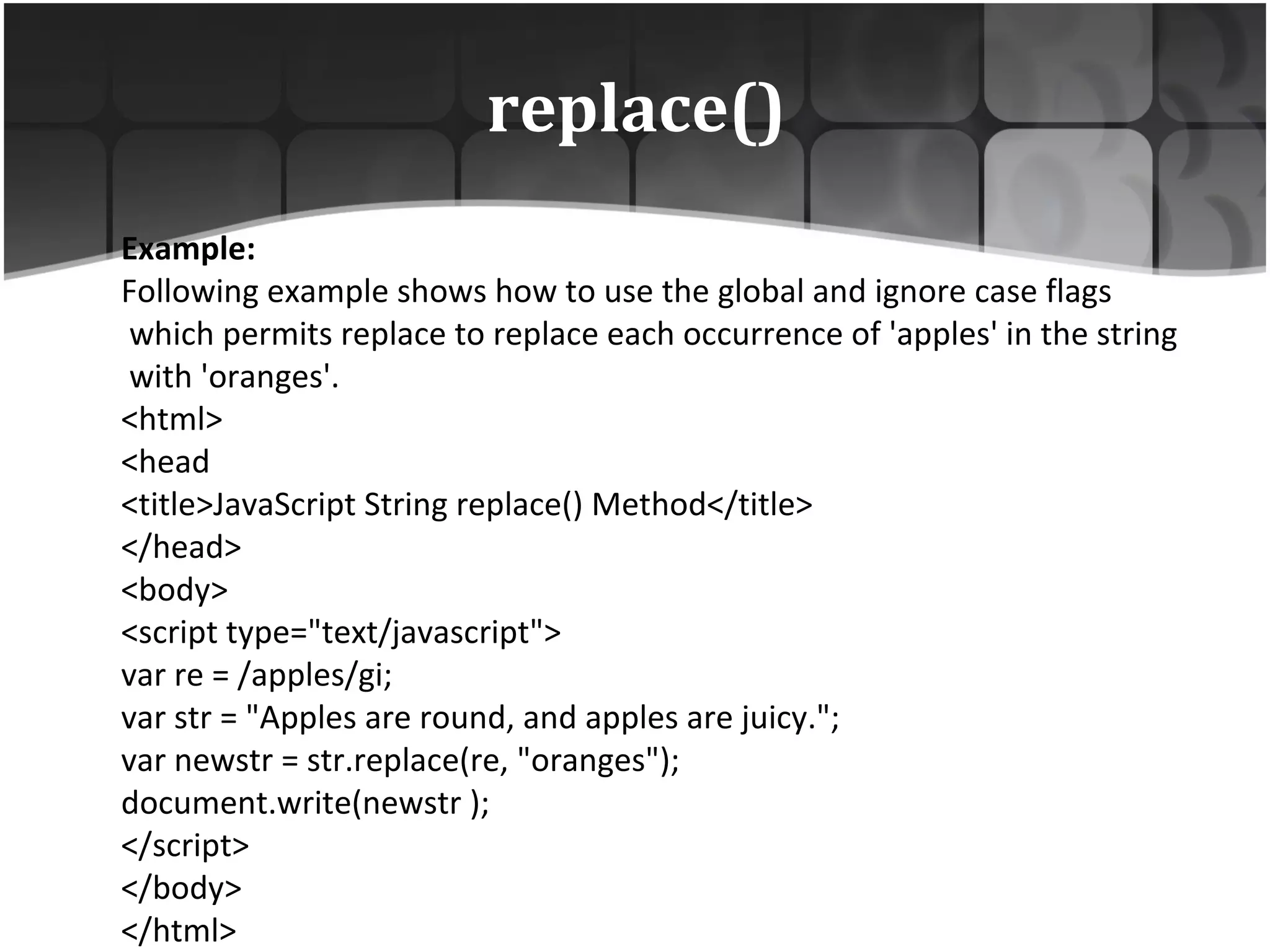
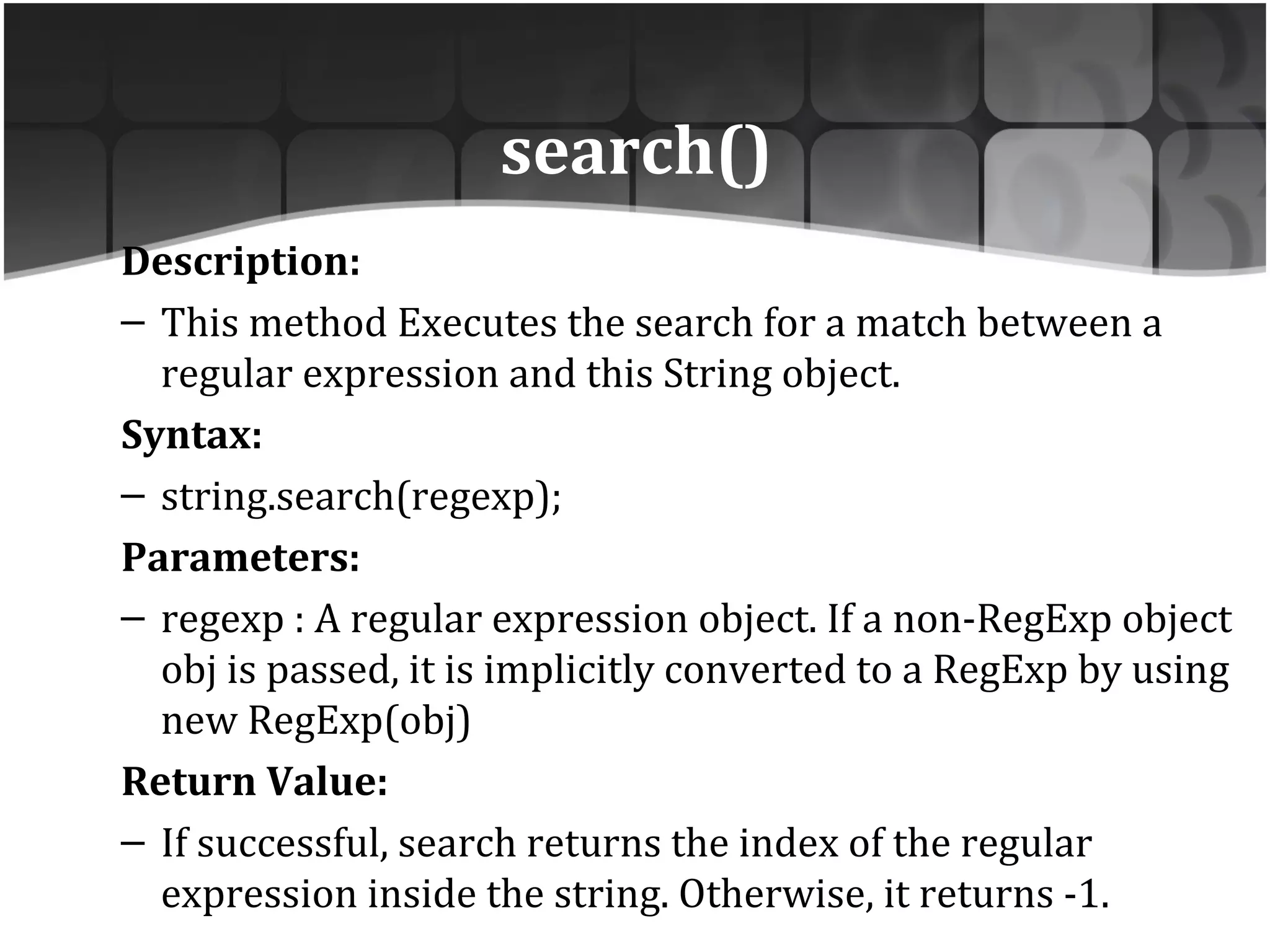
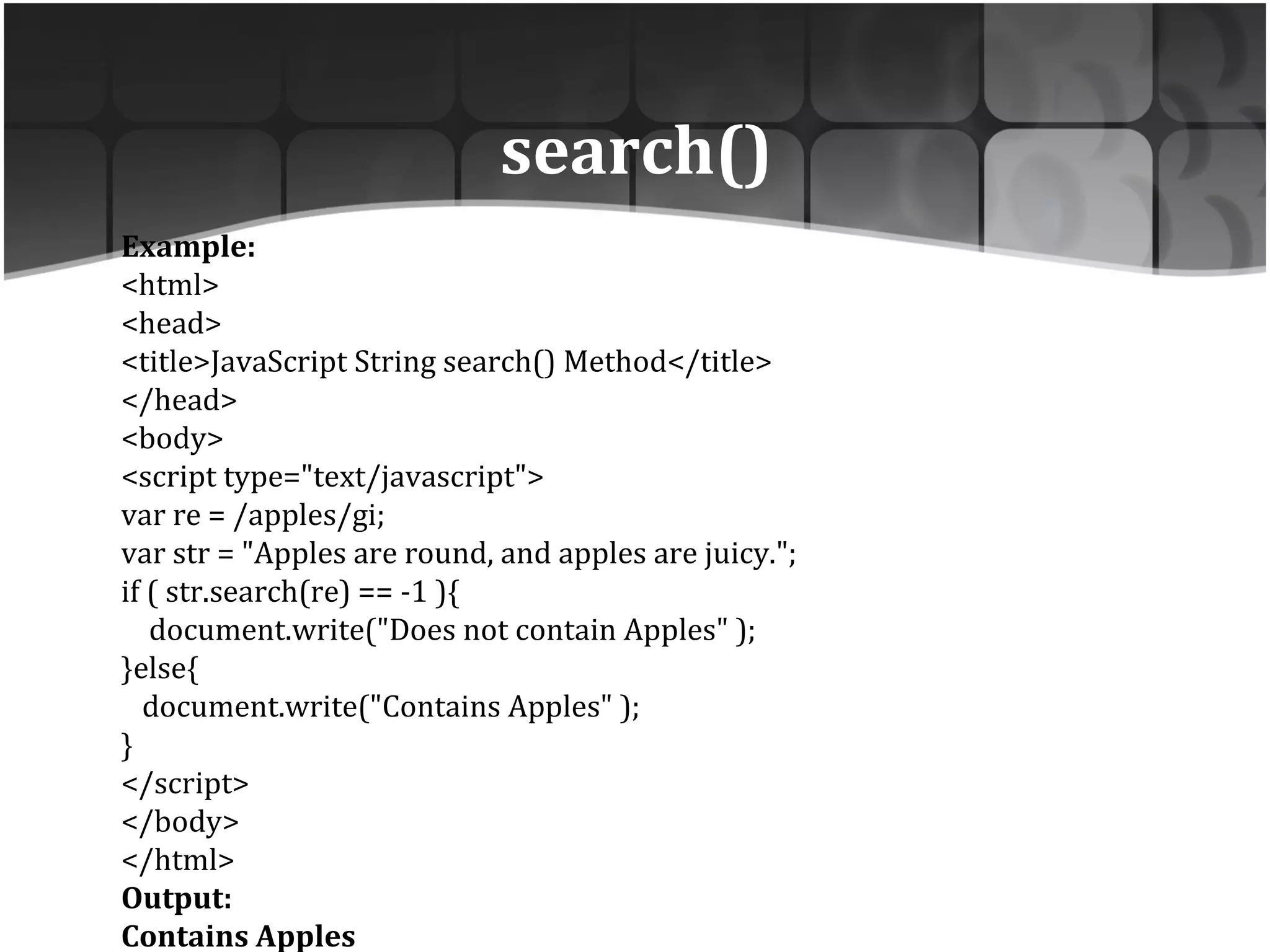
![substr()
Description:
– This method returns the characters in a string beginning at
the specified location through the specified number of
characters.
Syntax:
– string.substr(start[, length]);
Parameters:
– start : Location at which to begin extracting characters (an
integer between 0 and one less than the length of the string).
– length : The number of characters to extract.
Note: If start is negative, substr uses it as a character index
from the end of the string.
Return Value:
– The substr method returns the new sub string based on
given parameters.](https://image.slidesharecdn.com/javascriptfunctions-140625102156-phpapp02/75/Javascript-built-in-String-Functions-17-2048.jpg)
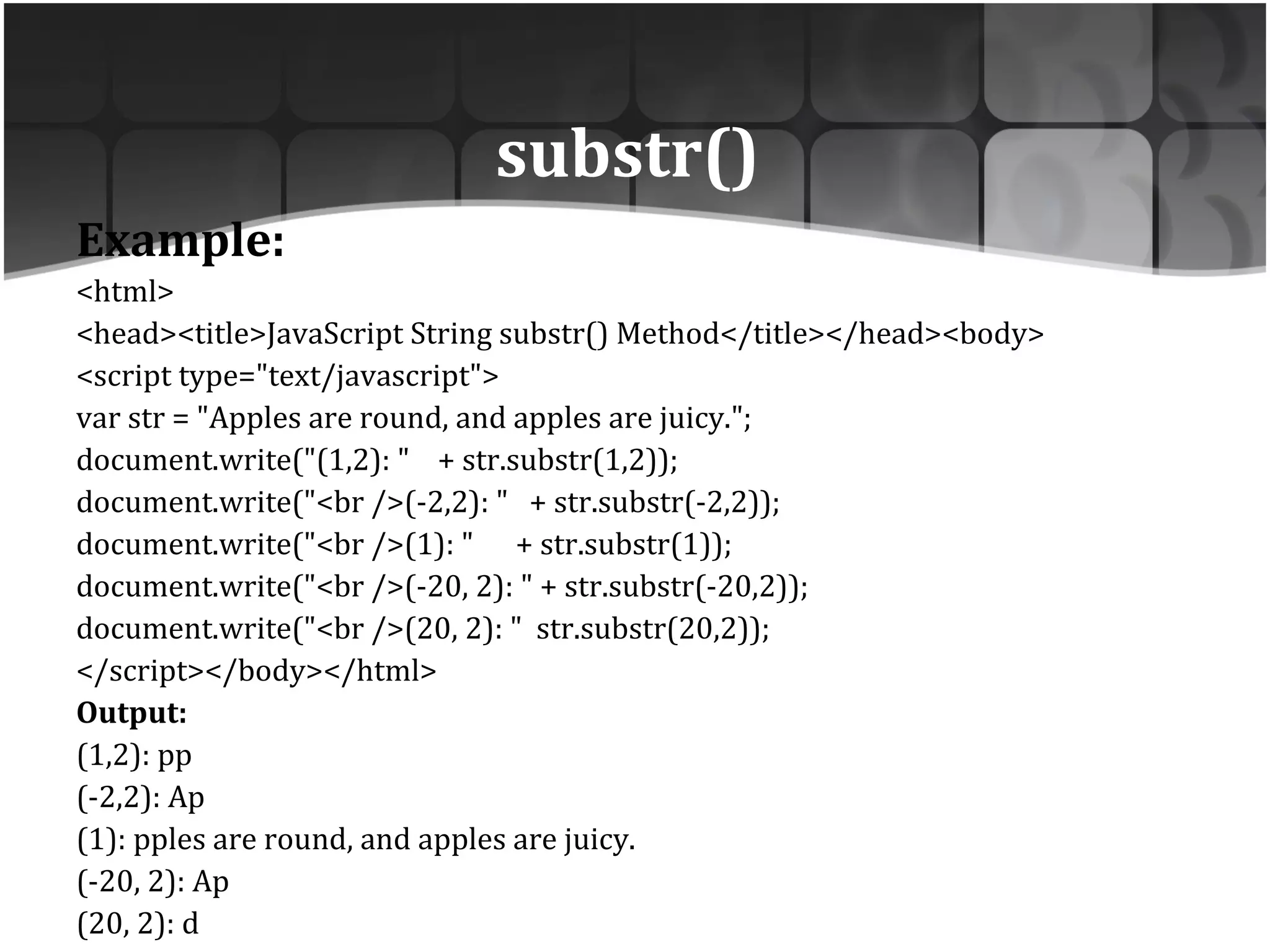
![substring()
Description:
– This method returns a subset of a String object.
Syntax:
– string.substring(indexA, [indexB])
Parameters:
– indexA : An integer between 0 and one less than the length of
the string.
– indexB : (optional) An integer between 0 and the length of the
string.
Return Value:
– The substring method returns the new sub string based on
given parameters](https://image.slidesharecdn.com/javascriptfunctions-140625102156-phpapp02/75/Javascript-built-in-String-Functions-19-2048.jpg)
